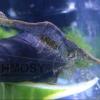-
Must Read SKF Articles
-
Posts
-
By beanbag · Posted
That shrimp itself survived the molt just fine, but left about half dozen eggs still in the shell. I haven't measured KH in a really long time, but assume it is zero since I don't have any rocks besides a few small pieces of lava rock. Maybe you have unwanted rocks in your tank? My tank is the "long" style which I really like because I have a HMF on one end, and a pump outlet spout that shoots water all the way to the other end. I have no idea how many shimp it can support because I don't really understand waste management in a tank. Shrimp poop eventually turns into mulm, but then what? -
-
By sdlTBfanUK · Posted
Just in case someone may be looking for the SL Aqua it is available from this UK website at time of this post, https://gbeeshrimp.co.uk/product/z1/ -
By sdlTBfanUK · Posted
Thats a great photo, beautiful blue bolt, I hope it survived the molt without dropping the eggs! I think I can just about see some black dots (eyes) on the central egg but can't be 100% sure. I used to (and plan to again) do weekly water change of 10-15% but if you do too large or quick (not drip in new water) that would likely trigger a molt. What KH are they in, my new setup is sitting at (and refusing to budge) KH 3 and PH 7.5 so I may have to settle for neocaridina shrimp this time as opposed to the caridina I want, though not looking/deciding just yet, give the tank a bit more of a run in! Tap water here starts at kH 14, tds 320, when filtered goes to KH 0 and PH 6 but when put in the tank keeps going to KH3 and PH 7.5 despite 3 x 50% water changes???? You may be at 'maximum capacity' with only 20L tank especially if the tank is a cube type rather than shallow type? -
By beanbag · Posted
Right now this tank only has blue bolts and golden bee (red bolts?). The eggs start off all brown, but at the end, I notice that some are kind of a clear pink-ish color. So I don't know if that is the egg color of dud or golden bee. Picture of shrimp only about half hour before molting. The water is always RO + remineralizer, so it should be ok. The tank seems to still be on a "good streak" ever since I started the regimen of weekly water change, monthly gravel vac and plant trim. The point being to keep the amount of waste low and removing moss / floating plants so that the nitrates go towards growing algae. At one point, I had three berried females, but only netted about half dozen babies by the end, due to this early molting problem. There might be about 30-40 shrimp total in 5 gallons, but still very few full-sized adults.
-



Recommended Posts
Create an account or sign in to comment
You need to be a member in order to leave a comment
Create an account
Sign up for a new account in our community. It's easy!
Register a new accountSign in
Already have an account? Sign in here.
Sign In Now